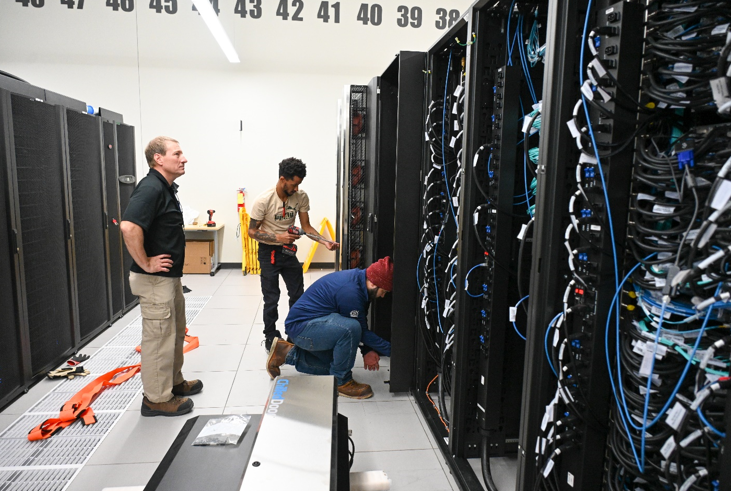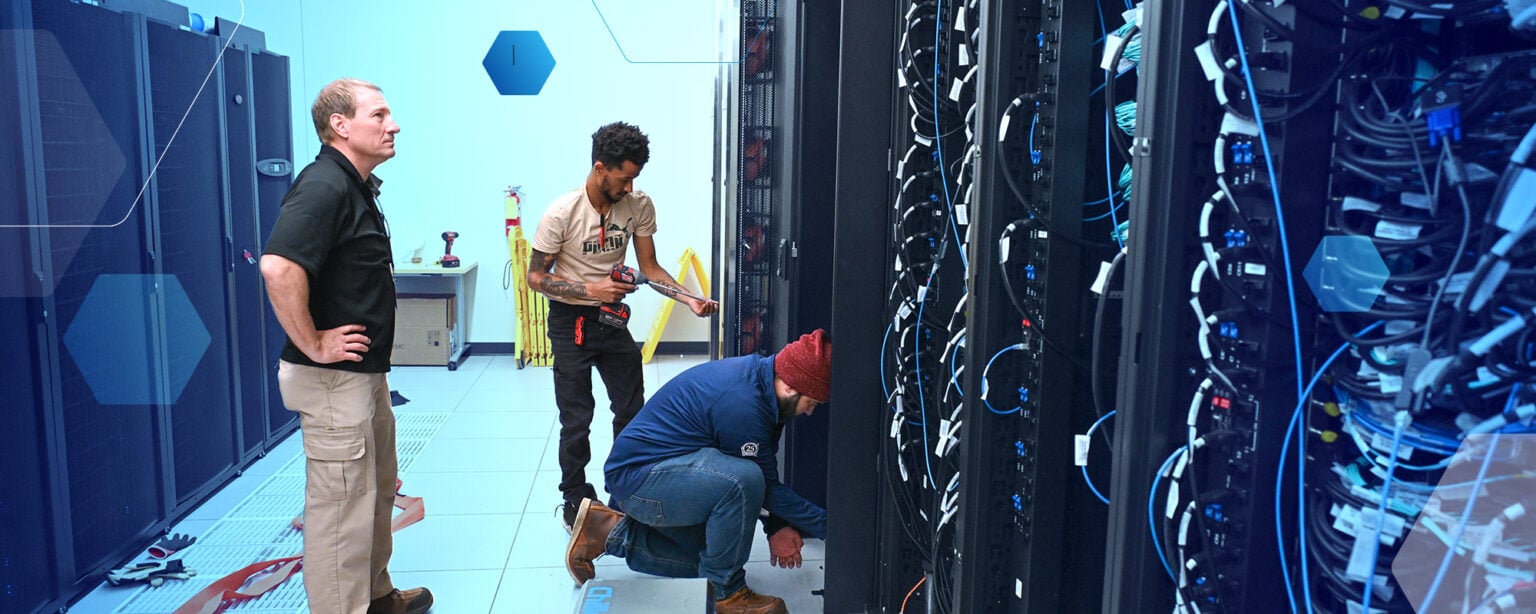If you’ve ever driven to a remote area, you may have noticed that the drive time is much longer on dirt roads. But once those roads are paved, you can get where you need to go much more quickly. The path to deploying advanced nuclear reactors isn’t a straight line, but a new supercomputer named Bitterroot being installed at Idaho National Laboratory (INL) is helping to speed the journey through improved access to modeling and simulation tools.
High-performance computing allows engineers and scientists to model a wide variety of complex variables before construction begins, such as how steel or concrete degrade over time or what byproducts build up in nuclear fuel. Through advanced computer codes running on these machines, they can even model how a nuclear power plant will weather seismic events. This allows them to anticipate the reactor’s overall performance, safety and longevity.
Through the Department of Energy’s Office of Nuclear Energy, Nuclear Science User Facilities (NSUF) program provides a suite of dedicated computing resources at INL for researchers from industry, universities, national laboratories and federal agencies. Now, with the installation of Bitterroot, the NSUF High Performance Computing team at INL have another resource to help speed the journey for nuclear developers around the country. Bitterroot is the name of an Idaho mountain range and continues INL’s tradition of naming its high-performance computers after Idaho landmarks.

Bitterroot will supplement the lab’s existing supercomputers at its high-performance computing data center — the Collaborative Computing Center — by adding an additional 43,008 computer processing cores with faster chips and a new capability: high-bandwidth memory. This new memory will improve performance for memory-bandwidth-limited applications like the Multiphysics Object Oriented Simulation Environment, better known as MOOSE, framework. MOOSE is the foundation for many of the tools that aid advanced nuclear research that support the existing reactor fleet as well as the development and eventual licensing of new designs.
Supercomputing for nuclear innovation
“INL high performance computing is unique in that 80-90% of our compute cycles are dedicated to nuclear energy research,” said Matthew Anderson, manager of the High Performance Computing group. “Bitterroot brings us a new capability and additional capacity as we prepare for additional long-term investments in new computing resources.” As the lab makes ongoing investments in hardware such as Bitterroot, it increases INL’s ability to support the growing need for modeling and simulation across the nuclear industry.
In addition to access to Bitterroot and the other supercomputers at INL, NSUF provides organizations across the country access to experimental capabilities that would otherwise be unavailable or prohibitively costly, including irradiation and post-irradiation examination facilities for nuclear energy fuels and materials research and development.
“Not every company in the nuclear industry has its own gamma irradiation facility or supercomputer, but we’re all working toward the same goal of deploying more carbon-free nuclear energy,” said NSUF Director Brenden Heidrich.” “You never know who will make the next breakthrough, and partnerships like NSUF are vital to help level the playing field.”
The Collaborative Computing Center at INL
To support high performance computing capabilities and provide a dedicated home for its supercomputers, INL partnered with the state of Idaho to build the Collaborative Computing Center, known as C3, which was completed in 2019. C3 is a 67,000-square-foot facility equipped to host multiple supercomputers. In addition to Bitterroot, C3 is also home to NSUF High Performance Computing’s flagship supercomputer Sawtooth, ranked as the 37th fastest performing supercomputer when it was installed in 2020, along with the lab’s other systems Lemhi, Hoodoo and Viz. In fiscal year 2023, INL supercomputers provided users with 939 million core hours on more than 3.7 million jobs.

Bitterroot arrived at INL in March 2024. Now, following installation and extensive testing activities, it was made available to users on June 18.
Supercomputers like Bitterroot are improving the nuclear industry’s ability to develop and qualify new reactor technologies and avoid delays on the road to commercial deployment. To learn more about how you can access Bitterroot and INL’s other supercomputers, visit the lab’s HPC website here.





